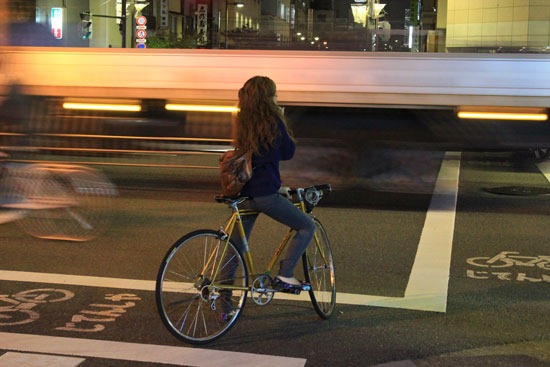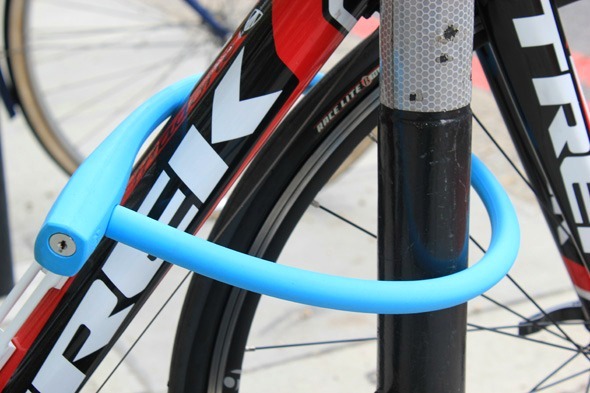Bon, vous allez encore me dire qu’il faut trop froid, qu’il pleut et qu’on est en janvier, mais au vu du temps de printemps qu’on a en ce moment, pas d’excuse!
Je suis tombée par hasard sur cet excellent article d’Andreas dans Cycling in London et avant de prendre quelques jours ou même un week-end pour une petite balade à la campagne, on peut commencer les bonnes résolutions en utilisant le vélo un peu plus souvent pour aller au boulot.
1. Why cycle? (Inspiration to keep you going)
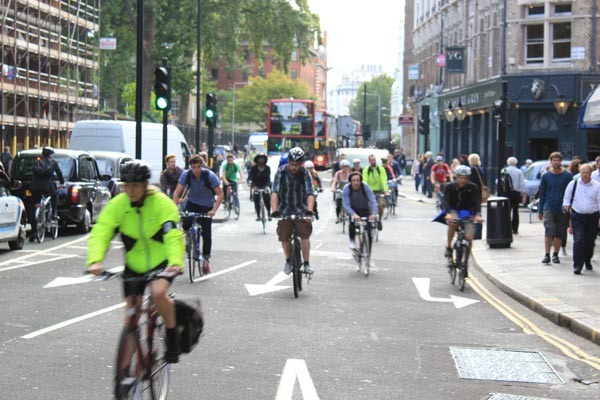
- Money in the pocket: In the UK our train fares are up to 10 times higher than many of our European counterparts such as Italy and Greece. Season tickets can cost up to £4000. A high end bike plus accessories will set you back around £1000. The rest you can spend on anything you want.
- Stay healthy: Cycling is a good way of getting in your daily exercise.
- Feeling great: Cycling wakes you up in the morning giving you better alertness throughout the day to perform better. It also connects you with the world around you making you feel alive.
- Beating the crowds: Using overcrowded public transport systems doesn’t have to be your daily reality. The bike is one way to beat it.
- Embracing the inner tree hugger: Less emissions make everyone happier.
- More time in bed: You can often save time by going by bike. This means more time in bed!
- Started, loved it: During the last London underground strikes many people who took to their bikes, loved it and kept going. The same thing has been reported to me repeatedly by my friends who are just taking up cycling. It is a quiet revolution that is happening and you are welcome to join!
2. Your new bike (how to save 50% or more)
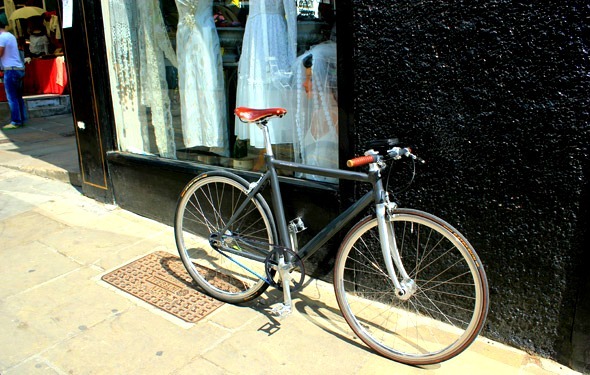
I’m not sure if anyone has told you this but you are going to need a bike. There is no shortage of different types of bikes: road bikes, hybrid, cross bikes, Dutch style bikes, electric, single speed, recumbent bikes, folding, touring bikes… the list goes on.
Your local bike shop will be able to advise on which will be most suitable to you.
If you cycle commute is fairly long (8+ miles) and road based then you’ll probably want to use a road bike. They are quick, efficient and comfortable over medium to long distances.
If your route involves a lot of urban cycling then an upright bike such as a hybrid may be more suitable. It has a more relaxed riding position and gives you better visibility on the road.
The one bike type I would avoid for most commutes is a mountain bike. They tend to be heavier with thick tyres and suspension. They are meant for off-road riding and will cause you to exert yourself more than is necessary.
There are many ways to save money when buying a new bike. You may be eligible for a cycle to work scheme whereby you only pay 50% of the cost of a new bike. Ask around at work if such a scheme is available to employees.
Another option is to buy second hand. The discounts on second hand bikes are steep and it can be a good way to get a bike that would normally be out of your price range. You can also buy your bike online.
I’d highly recommend having a test ride on your new bike before buying. This will help you judge the bike sizing.
3. What accessories will I need? (The bare essentials)
Put these accessories on your “to buy” list:
- Two bike locks: So that you can lock all of your components and beat the thieves
- Bike lights: If it is winter or you’ll be riding home late.
- Repair kit: pump, spare inner tube, multi-tool, tyre levers.
- Mudguards
Many cyclists also choose to wear a bike helmet.
A worthy upgrade I’d recommend are puncture proof tyres. They should mean less time spent off the bike, fixing punctures and getting your hands oily. The bike shop should be able to throw a pair of these in for you.
4. Planning your route into work (The importance of the test ride)
The first day I cycled into work I ended up on Oxford Circus and completely lost. It turned out I was around 2 miles away from where I should be. I now advise my friends to do a test ride into work before their first cycle.
Pour planifier votre route à Paris ou à Tours, Geovelo.com est en train de constituer un réseau de référence. Sinon vous trouverez dans chaque ville une bonne vieille carte des pistes cyclables.
5. Riding safely (Avoid these common errors)
There are three quick things you can change about your cycling technique that can make a big difference to your safety.
The first is avoiding heavy goods vehicles at all costs. When you see one, alarm bells should be ringing in your mind and reminding you they have very large blind spots. Choose to either stay behind a HGV or overtake on the right (in the same way a motorbike would).
The second is road positioning. Many people try this, but then give up on it because one day a driver gets annoyed at them. The rule is: A car will give you as much room as you give yourself on the left. Therefore, don’t cling to the pavement if you want cars screaming past you with inches to spare. Instead, ride further out which gives you an opportunity to move in if there is a danger. This also makes you far more visible.
The final one I’ll mention in this post, is to establish eye contact with drivers behind you. It’s a little hard for me to explain why this works so instead I suggest you try it and see what happens. When you establish eye contact they’ll realise it is a person on that bike not just another “bloody cyclist” and they’ll give you more room.
6. Keeping your bike safe (Out the hands of thieves) (ou les 8 règles pour ne pas se faire piquer son vélo)
Do you want to know how to get your bike stolen? Use one, cheap, £20 lock and only lock it around the front wheel. The thief will walk up to your bike, undo the quick release in 5 seconds and walk away with the rest of your bike.
You should always use two locks and follow the correct locking technique:
- Never lock your bike to an object where the bike can be lifted over (this includes sign posts that could be unscrewed)
- Never leave your bike unattended even for “just one minute”
- Ideally lock the two wheels and the frame to the object
- Use two different types of lock as the thief is likely to only be equipped to attack one type
- Register your bike with Bike Shepherd (or equivalent service)
7. Looking after your bike (Losing your tyre puncture virginity..)
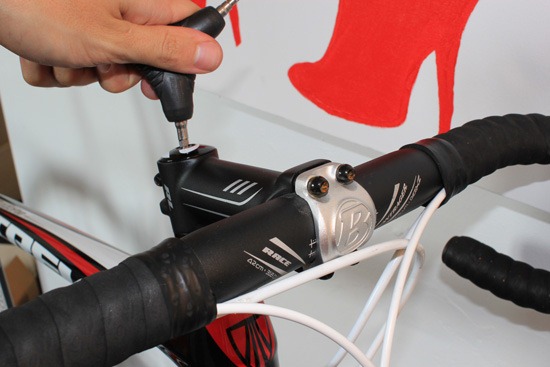
The are three things you need to know:
- How to remove your wheel and repair a puncture – by far the most likely repair you’ll have to do.
- How to clean your bike – this will save you a ton of money as dirt in your expensive components wears them out prematurely.
- How to adjust and replace your brake pads – these will eventually wear out and it’s good to not rely on the bike shop to repair them.
The Bike Doctor app can show you how to do all of the above wherever you are.
8. Keeping your resolution (Burn your travel card!)
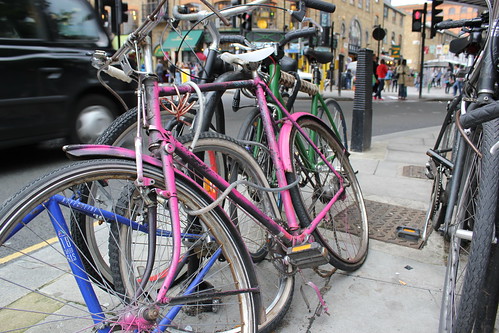
As anyone who’s tried to lose weight, learn Spanish or stop letting their cat into the house whenever it wants to – we know new habits are hard to keep. The 30 day rule is a good start.
Make it your aim to cycle into work daily without a break for 30 days. Use the website iDoneThis which will email you and ask what you’ve done today. Try not to break the chain!
In combination with this tell one or more friends about what you are doing and ask them to check in with you daily to see how you are doing. The pressure to not fail should help keep you on the straight and narrow.
You can also make it harder for you to cheat. Burn your Oyster card or, more sensibly, give it to a friend and tell them to not give it back to you until after the 30 days are up.
Source: Cycling in London
 Follow
Follow